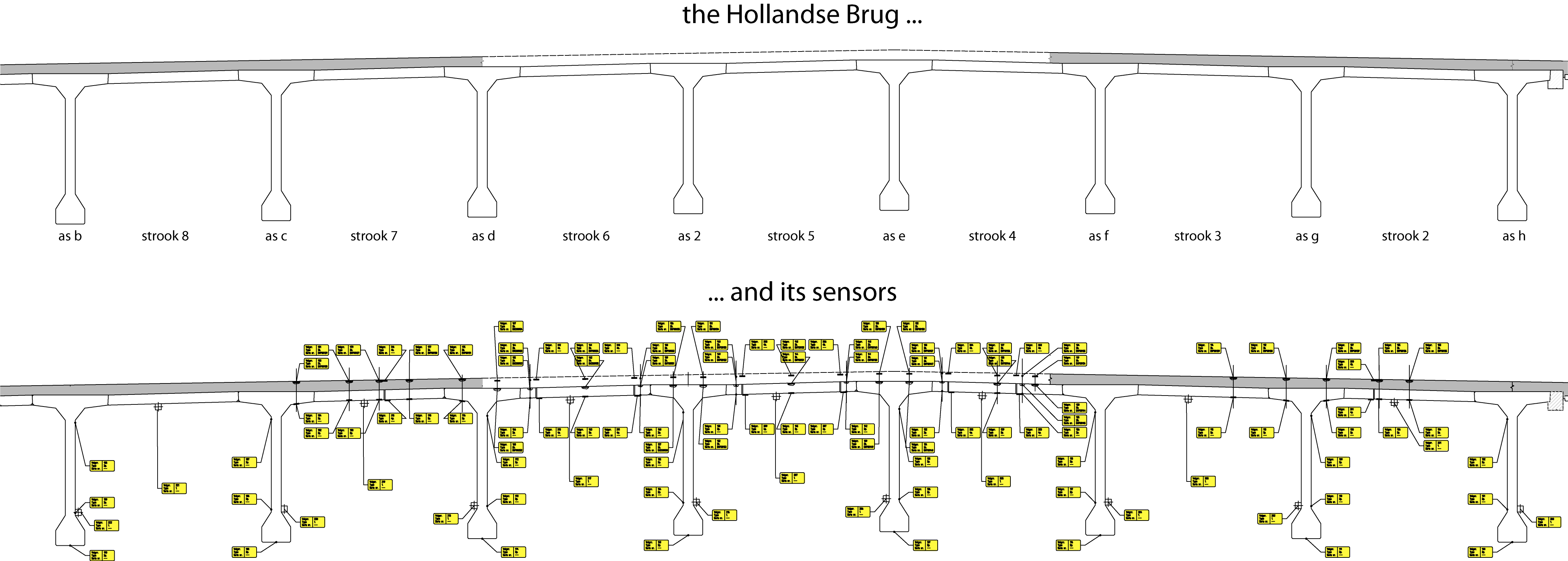


Infrastructures like roads and bridges are built to endure harsh conditions, such as heavy duty traffic or extreme weather conditions. In other words, they are built to last. However, in reality they do not last forever: on the long run harsh conditions take their toll and deteriorate the infrastructures over time until, eventually, they need to be repaired.
In order to keep traffic moving, we therefore need to do maintainance on our infrastructure. The current approach is to do ad-hoc damage control. We keep using the infrastructure until it becomes unusable, close it down, and repair it as quickly as we can. So far so good... Sadly to find out one month later that we need to close it down -again- to repair a completely different part.
What lacks is a keen insight into how the quality of infrastructure assets evolve over time. This research theme forms the centre of the InfraWatch project; a collaboration between the Leiden University and the Delft University of Technology. Together with our industrial partner Strukton, we focus on one asset in particular, a bridge in the Netherlands called the Hollandse Brug.


During a recent renovation project, a total of 145 sensors were embedded in and attached to the Hollandse Brug by Strukton. These sensors include strain sensors, vibration sensors, temperature sensors, and also a video camera. This large array of sensors continuously monitor all events on the bridge, and provides a huge data flood from it: every day, about 5 GB of non-video data is gathered, more than one DVD a day!
Having all this data is a good start, but making sense of all this data is even better. In order to get a better understanding of how the bridge behaves over time, we need to store data over a very long time span, and use this to find interesting changes and behaviours. This is the real challenge, as current data analysis techniques often operate on data that is just a fraction of this size.
| 30-5-2013 | Part of the InfraWatch data has been released to the public! Checkout the Public Data section below. |
| 11-9-2012 | A short video about the InfraWatch project and the benefits deriving from the use of the Hadoop framework will be shown at the 'BiG Grid and beyond' event, to be held in Amsterdam on September 26. |
| 9-12-2011 | Arno Knobbe has given a talk about InfraWatch and modeling of complex physical systems at the "Symposium jubileum 40 jaar" event hosted by SARA. You can download the slides here. |
| 1-10-2011 | Ricardo Cachucho, data mining researcher at the University of Leiden, and Rene Veerman, PhD candidate in civil engineering at the University of Delft, have joined the InfraWatch project. |
| 7-12-2010 | Joaquin Vanschoren, working on the InfraWatch project, has won the first prize for the "Best Hadoop application written in one afternoon" competition. He used an Hadoop system to analyse InfraWatch sensor data. This competition was held during the SARA Hadoop Hackathon event. Click here for more details on the event. |
As the InfraWatch project represents a challenging testbed for the evaluation of methods dealing with time series data, we have released a selection of the collected data for the benefit of the research community. The selection consists of two time series collected on different periods from one of the strain sensors installed on the Hollandse Brug. The table below summarizes the main properties of the released time series and the first paper featuring them.
| Dataset | Paper | Period | Sensor Type | Sampling Rate | Length |
|---|---|---|---|---|---|
| Monday | PKDD 2012 | 01/12/2008 | Strain | 1 Hz | 86096 |
| Twelve days | CIKM 2013 | 15/11/2008 - 26/11/2008 | Strain | 10 Hz | 10280939 |
We encourage researchers and practitioners to evaluate their time series methods and algorithms on this dataset, especially those designed to deal with events and motifs at multiple temporal scales, one of the main features of the InfraWatch data. In return, please give credit to the Infrawatch project by citing the papers below.
The papers introduce the InfraWatch project, explain in detail how the data has been collected and propose methods designed to deal with its multi-scale nature.
Write us if you have questions and want to know more.
 |